American Giants: The History of Moog
From Mini to Memory to the One, this is the history of Moog.
Moog changed everything and did it with class. Here is a brief history of Moog the company and the man, from the beginning to the unsure future.
The History of Moog
The history of Moog is pretty much the history of synthesizers. While Robert Moog didn’t invent the synthesizer, he did help codify what we think of as the synthesizer. In fact, his work is synonymous with the instrument.
Even now, almost 60 years after he released the first commercial synthesizer, people still associate the name Moog with the instrument. And pronounce it incorrectly. But that’s a discussion best left to the comments section.
In this very brief history of the companies to bear Bob Moog’s name, I will attempt to encapsulate what he did, the instruments released both in his time and after, and what we might expect from the future.
I apologize in advance if I don’t mention your favourite Moog synth. I’ve only got 1500 or so words to work with here and really, this subject deserves that many pages in a book, let alone words. It’s the first part of a larger series on American synthesizer giants, one that will include ARP, Sequential, Oberheim, and more.
The History of Moog: R. A. Moog Co. (1953-1967)
The history of Moog began 70 years ago in 1953 in New York, when a 19-year-old Robert Moog set up R. A. Moog Co. with his father. Moog’s initial product wasn’t synthesizers – that wouldn’t come for another decade – but theremin kits, which he sold to help finance his education.
A chance meeting in 1963 with composer and inventor Herbert Deutsch started Moog down the path that was to become his destiny: that of synthesizers. Invented in 1964, the Moog synthesizer was a modular system comprised of individual units, such as oscillators, filters and envelopes. One of his key inventions was the voltage-controlled oscillator, which allowed players to control pitch with a piano-style keyboard.
Moog synthesizers were sold as individual modules, such as the now iconic 901 VCO/LFO, 904A 24db/octave lowpass filter and 911 envelope generator. They were (and are) sold in assembled configurations as well, including the Model 10, Model 15 (also now available as an app), and the Emerson Moog Modular System as used by Keith Emerson of ELP fame.

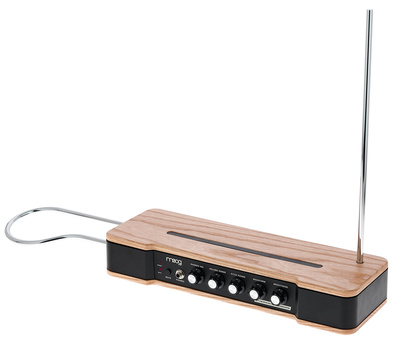

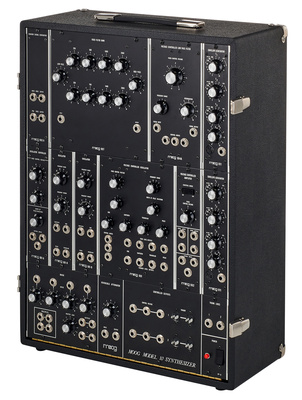
The History of Moog: R. A. Moog Inc. (1967-1971)
Sales of theremins and the very expensive Moog synthesizer continued through the late 1960s, with well-heeled artists like Mickey Dolenz of The Monkees, George Harrison, and even Jimi Hendrix buying systems.
It was Wendy Carlos’ ground-breaking classical record, Switched-On Bach, however, that would make Moog a household name. One of the best-selling classical records of all time, it helped the company (now renamed R. A. Moog Inc.) achieve profitability for one brief year in 1969.
Although initially dismissive of the idea of a hardwired and portable version of the Moog synthesizer, Bob soon came around to what would eventually be called the Minimoog Model D. With its three oscillators, famous lowpass filter, and pitch wheel (a world first), it was fat, musical and almost immediately adopted by musicians.
It also helped set the standard for the concept of the synthesizer, with many synths today still bearing a similar left-to-right signal path and panel layout. The Minimoog has been in production three times at Moog and inspired countless copies as well.

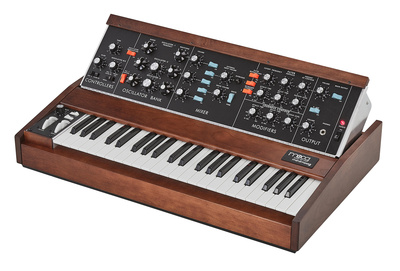
The History of Moog: Moog Musonics/Moog Music, Inc. (1971-1987)
Despite the popularity of the Minimoog it wasn’t enough to pull the company into lasting profitability and so began a few years of new owner musical chairs. muSonics, a competing synthesizer company, bought Moog in 1971.
They renamed the company Moog Musonics and changed it again in 1972 to Moog Music, Inc. Norlin Industries then bought them in 1973. Although Bob was no longer the owner, he remained on as an employee under contract, continuing to develop synthesizers.
Along with Minimoog Model Ds, which continued to sell, Moog Music developed a number of famous synthesizers during this time period. One was the unique Sonic Six (1974), a holdover from muSonics that ended up in a foldable flight case and didn’t look like anything else to bear the Moog name.
The company also released a number of relatively affordable Minimoog alternatives, such as the Micromoog in 1975, the Multimoog in 1978, the Prodigy (which gave the band its name) in 1979, and the Rogue in 1981, which also had a counterpart sold through RadioShack stores, the Concertmate MG-1.
While Moog was best known for its monosynths – and still is, really – the Norlin era saw the release of a few polysynths too. The Polymoog (1975) and Polymoog Keyboard (1978) used divide-down oscillator technology and were paraphonic in structure.
The original (model number 203a) offered some control over its eight presets, while the Keyboard version (model 280a) upped the preset count to 14 but removed many controls.
Moog Music’s last synth of the Norlin era to get a release was the Memorymoog in 1982. A monster three-oscillator polysynth, it brought Moog-style power to the world of polys, albeit with Curtis CEM 3340 IC oscillator chips rather than Minimoog-style discrete ones. There was also a Memorymoog Plus, with factory MIDI and a sequencer.
As with some other American synth companies of the time (ARP and Sequential come to mind), Moog had a hard time competing against Japanese manufacturers and was out of business by 1987.
The History of Moog: Big Briar (1978-2002)
Bob Moog’s employee contract with the Norlin-owned Moog Music ended in 1977. Rather than continue, he left to start his own company, Big Briar, which he set up in Asheville, North Carolina (where Moog Music remains to this day).
Big Briar focused on controllers and other peripherals as well as theremins, Bob’s first love. He also did some consulting work for other companies, including on the Crumar Spirit.
Perhaps the most famous product line from the Big Briar era is the Moogerfooger series, guitar pedal-style analogue effects modelled on original Moog synthesizer modules. The Moogerfooger effects are now available as apps.

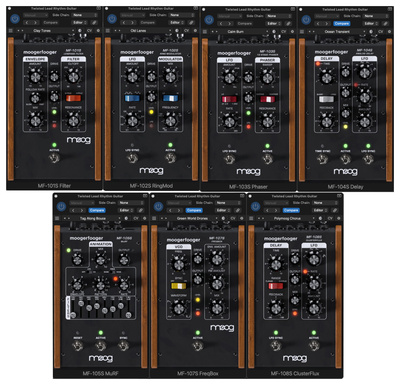
The History of Moog: Moog Music (2002-present)
After some legal wrangling, Bob wrested the Moog Music trademark away from Don Martin, a manufacturer who obtained the name in 1994. The first product that Bob released under the new Moog Music was the Minimoog Voyager in 2002. This was the beginning of Moog Music’s second golden age, one that coincided with the modern rise in popularity of analogue synthesis.
While the Minimoog Voyager series is rather large (including a model, the Electric Blue, that actually came out during the Big Briar era), essentially it was a modern reimagining of the classic Minimoog.
Along with the three-VCO configuration, it featured two filters, two modulation busses, and patch memory.
Bob Moog sadly died in 2005. The last synth to include his input was the Little Phatty, a two-oscillator monosynth. Available in four different versions, it also spawned the keyless Slim Phatty in 2010. With Bob gone, Moog Music soldiered on, continuing to release instruments like the Sub 37 (2014) and its offspring, Subsequent 37 CV and Subsequent 37 (2017).
The Moog Sound Studio
Although the company would continue to manufacture Moog synthesizer modules and systems, it also released products to be incorporated into Eurorack. The first of these was Mother-32. Released in 2015, Mother-32 is a single-VCO semi-modular synth that can work stand-alone or in a Eurorack case.
Moog would go on to release a number of instruments in this same format, including DFAM (Drummer From Another Mother) in 2018 and Subharmonicon in 2020.
- Moog Mother-32 · Source: Moog Music
- Moog Grandmother · Source: Moog
Looking back to its Moog synthesizer start, in 2018 Moog Music announced Grandmother, a semi-modular two-oscillator synth with components based on classic modules. With its bright, science kit-style colours and numerous patch points, it was a unique take on the analogue monosynth.
This was followed in 2019 with the Matriarch, a similarly colourful semi-modular synth, this one four-voice paraphonic with a stereo delay. Moog also made dark versions of the two.
In addition, Moog revisited its polyphonic past with the Moog One in 2018, a massive (and massively expensive) modern poly that reimagines the Memorymoog but with a distinctly modern flair.

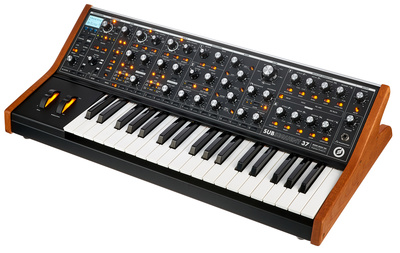

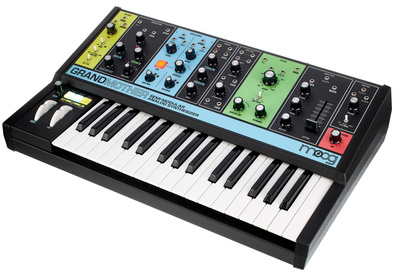

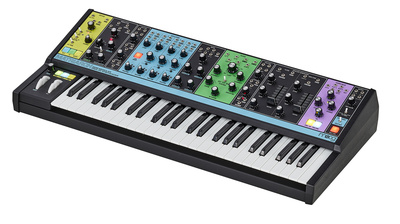

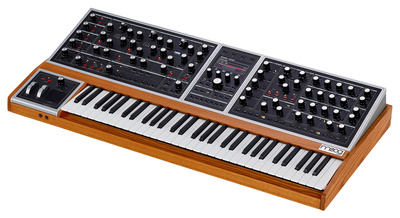
The Future of Moog: inMusic Purchase (2023)
The history of Moog is still being written. In June of 2023, music conglomerate inMusic bought Moog Music. This was followed by staff layoffs and the announcement that some manufacturing would move overseas, surprising given that Moog instruments had been handmade in the United States. Moog Music has already promised new product announcements in early 2024.
A lot has happened since a young Robert Moog started selling theremin kits out of his home in 1953. Although it’s tempting to worry that this latest version of Moog Music will destroy his legacy, I’m trying to stay positive. The company that Bob founded has carried on without him a few different times.
Some of the most beloved instruments to bear his name had no input from him at all. Hopefully, those involved will continue to honour his legacy with high-quality instruments that inspire and delight. As he would have wanted.
More information:
- Moog’s homepage
- All about Moog
- Minimoog softsynths
- The History of Roland
- The History of Yamaha
- The History of Korg
Videos:
You are currently viewing a placeholder content from YouTube. To access the actual content, click the button below. Please note that doing so will share data with third-party providers.
You are currently viewing a placeholder content from YouTube. To access the actual content, click the button below. Please note that doing so will share data with third-party providers.
You are currently viewing a placeholder content from YouTube. To access the actual content, click the button below. Please note that doing so will share data with third-party providers.
You are currently viewing a placeholder content from YouTube. To access the actual content, click the button below. Please note that doing so will share data with third-party providers.
You are currently viewing a placeholder content from YouTube. To access the actual content, click the button below. Please note that doing so will share data with third-party providers.
You are currently viewing a placeholder content from YouTube. To access the actual content, click the button below. Please note that doing so will share data with third-party providers.
You are currently viewing a placeholder content from YouTube. To access the actual content, click the button below. Please note that doing so will share data with third-party providers.
You are currently viewing a placeholder content from YouTube. To access the actual content, click the button below. Please note that doing so will share data with third-party providers.
You are currently viewing a placeholder content from YouTube. To access the actual content, click the button below. Please note that doing so will share data with third-party providers.
You are currently viewing a placeholder content from YouTube. To access the actual content, click the button below. Please note that doing so will share data with third-party providers.
You are currently viewing a placeholder content from YouTube. To access the actual content, click the button below. Please note that doing so will share data with third-party providers.
You are currently viewing a placeholder content from YouTube. To access the actual content, click the button below. Please note that doing so will share data with third-party providers.
You are currently viewing a placeholder content from YouTube. To access the actual content, click the button below. Please note that doing so will share data with third-party providers.
*Note: This article contains affiliate links that help us fund our site. Don’t worry: the price for you always stays the same! If you buy something through these links, we will receive a small commission. Thank you for your support!
2 responses to “American Giants: The History of Moog”
 4,6 / 5,0 |
4,6 / 5,0 | 

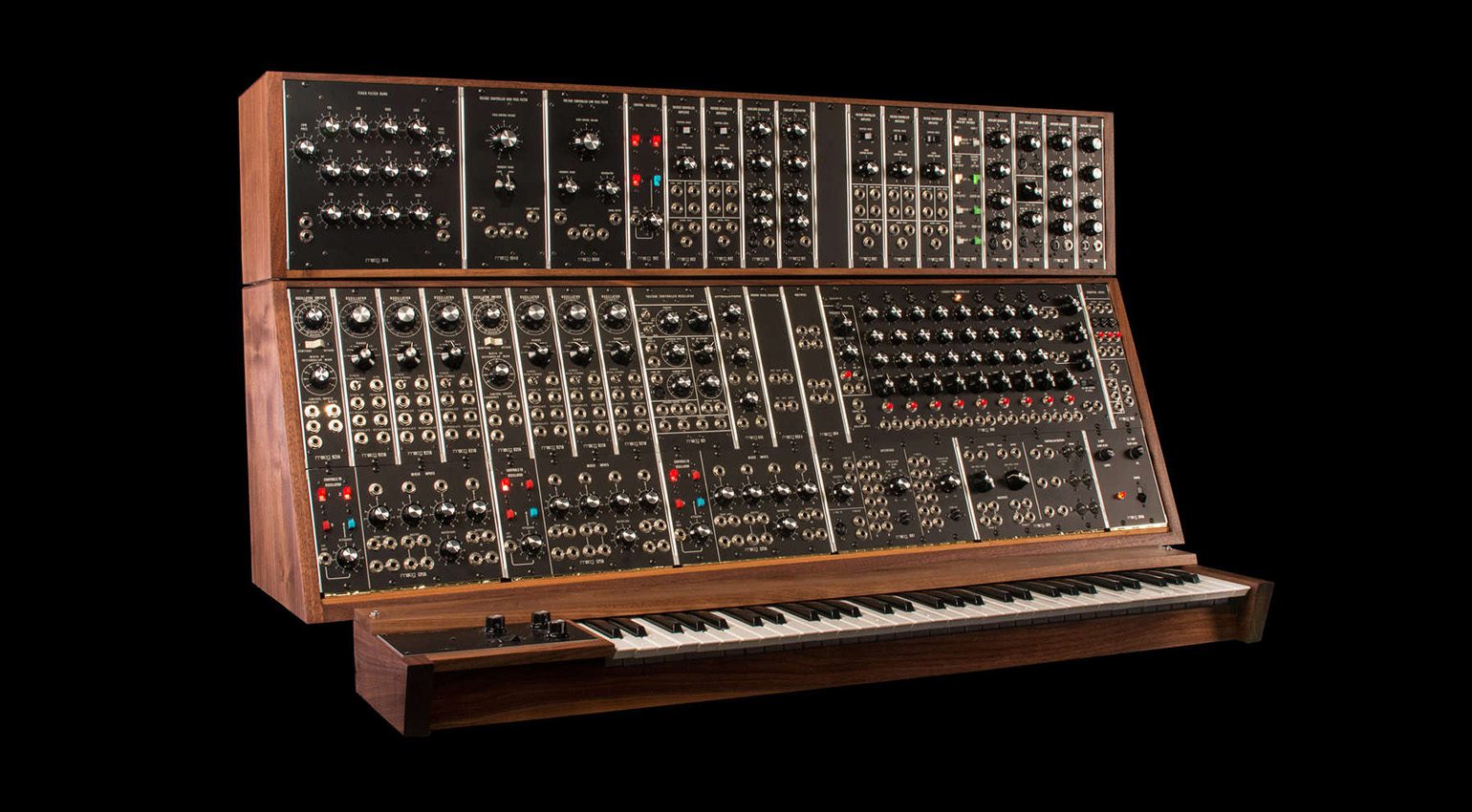

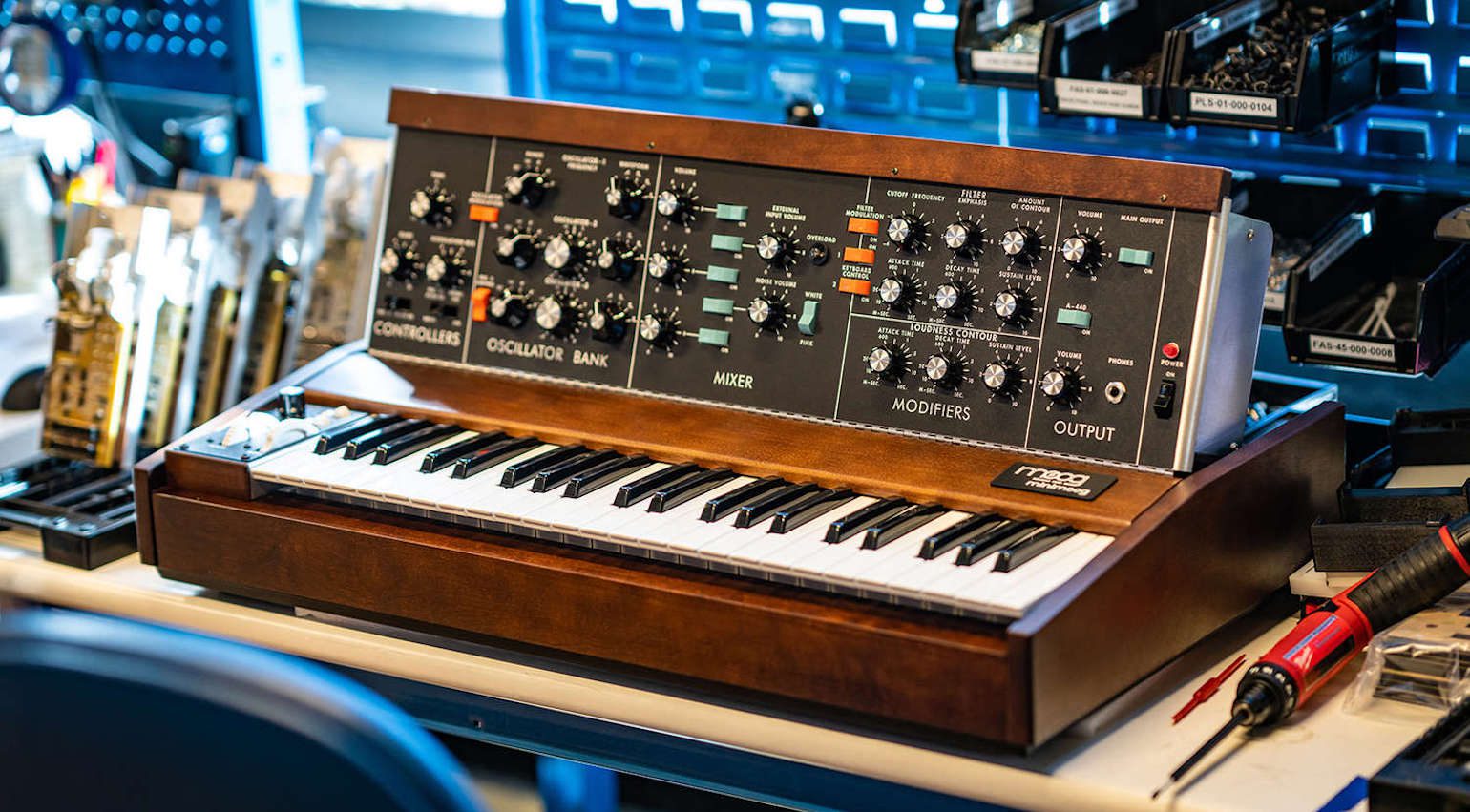
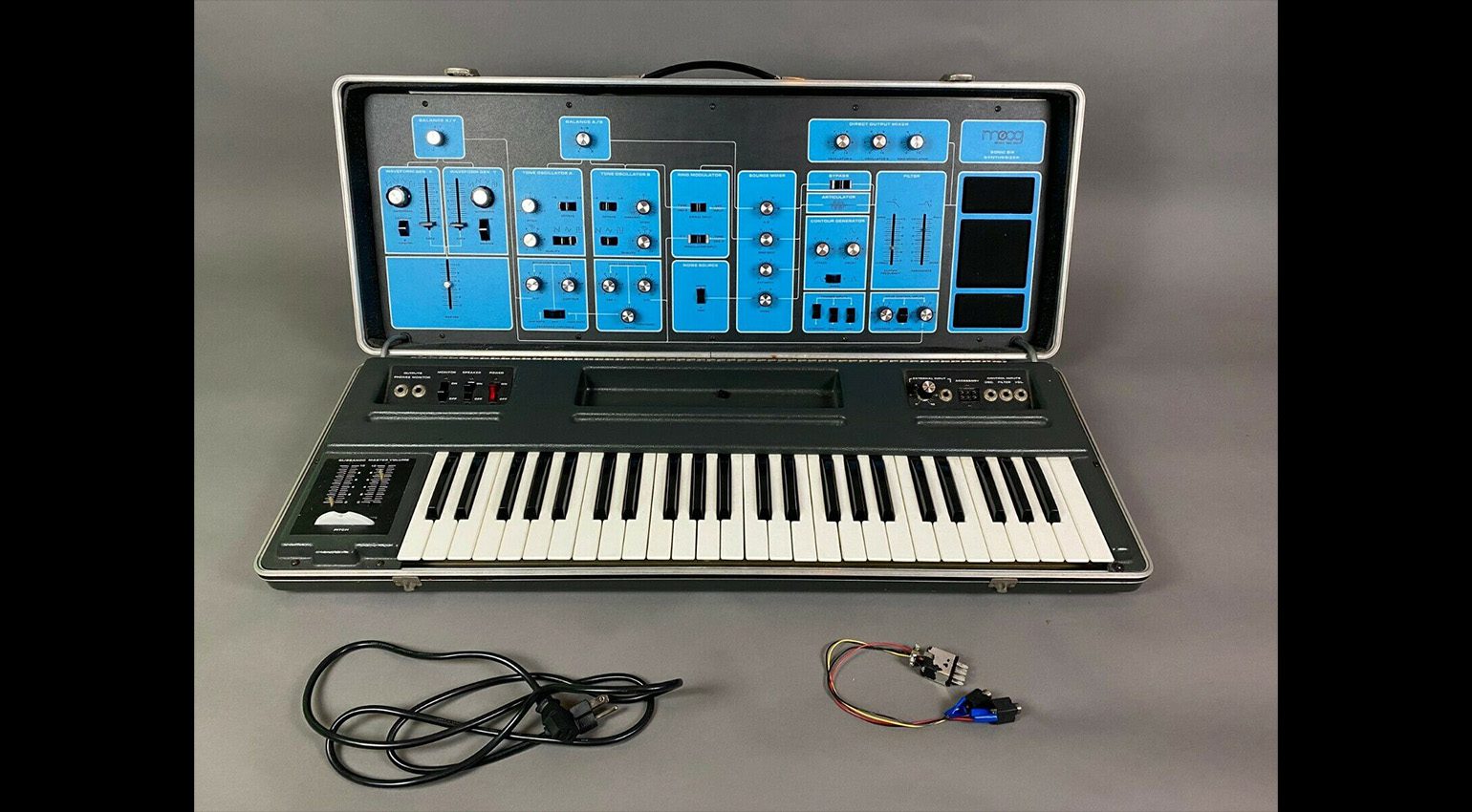
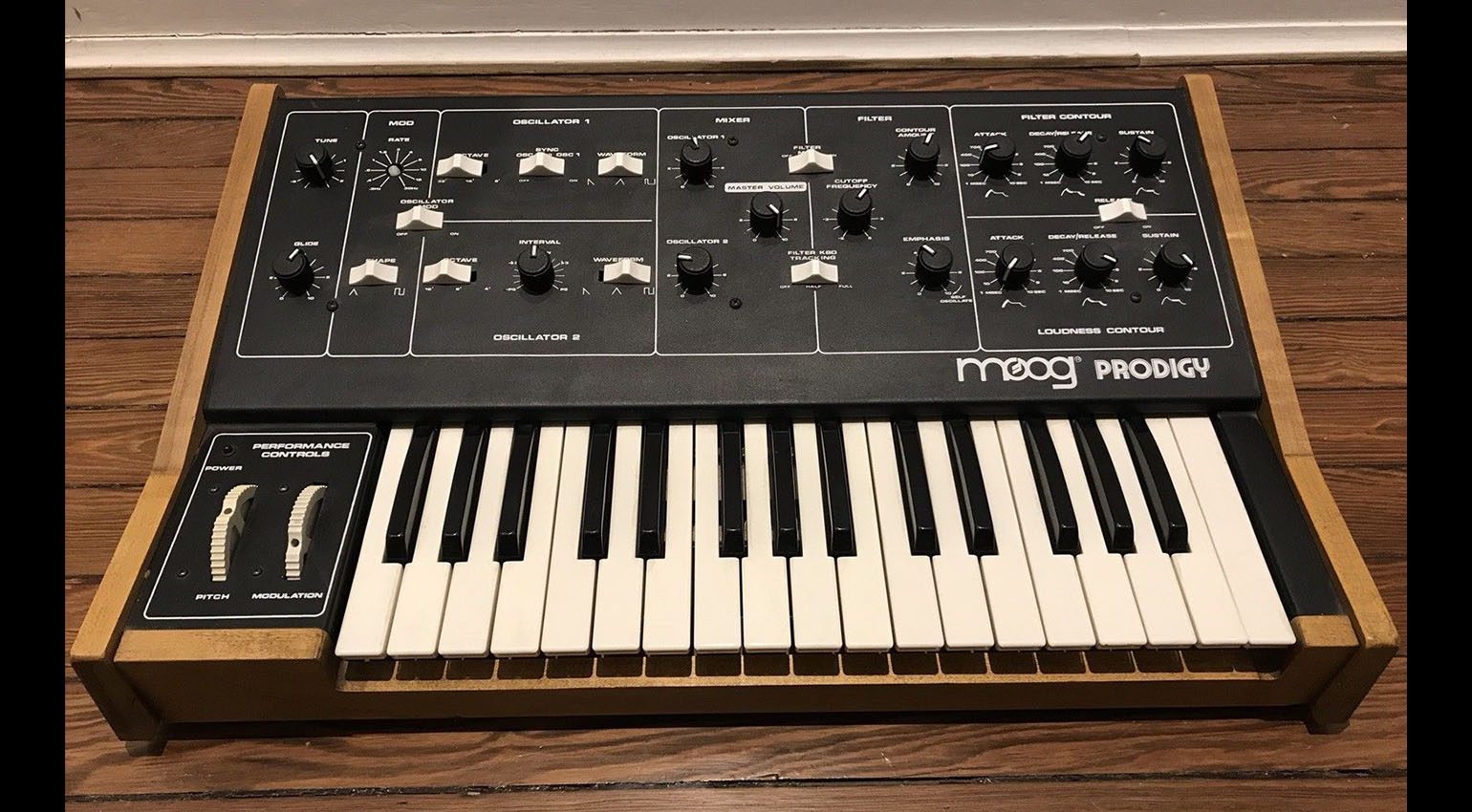

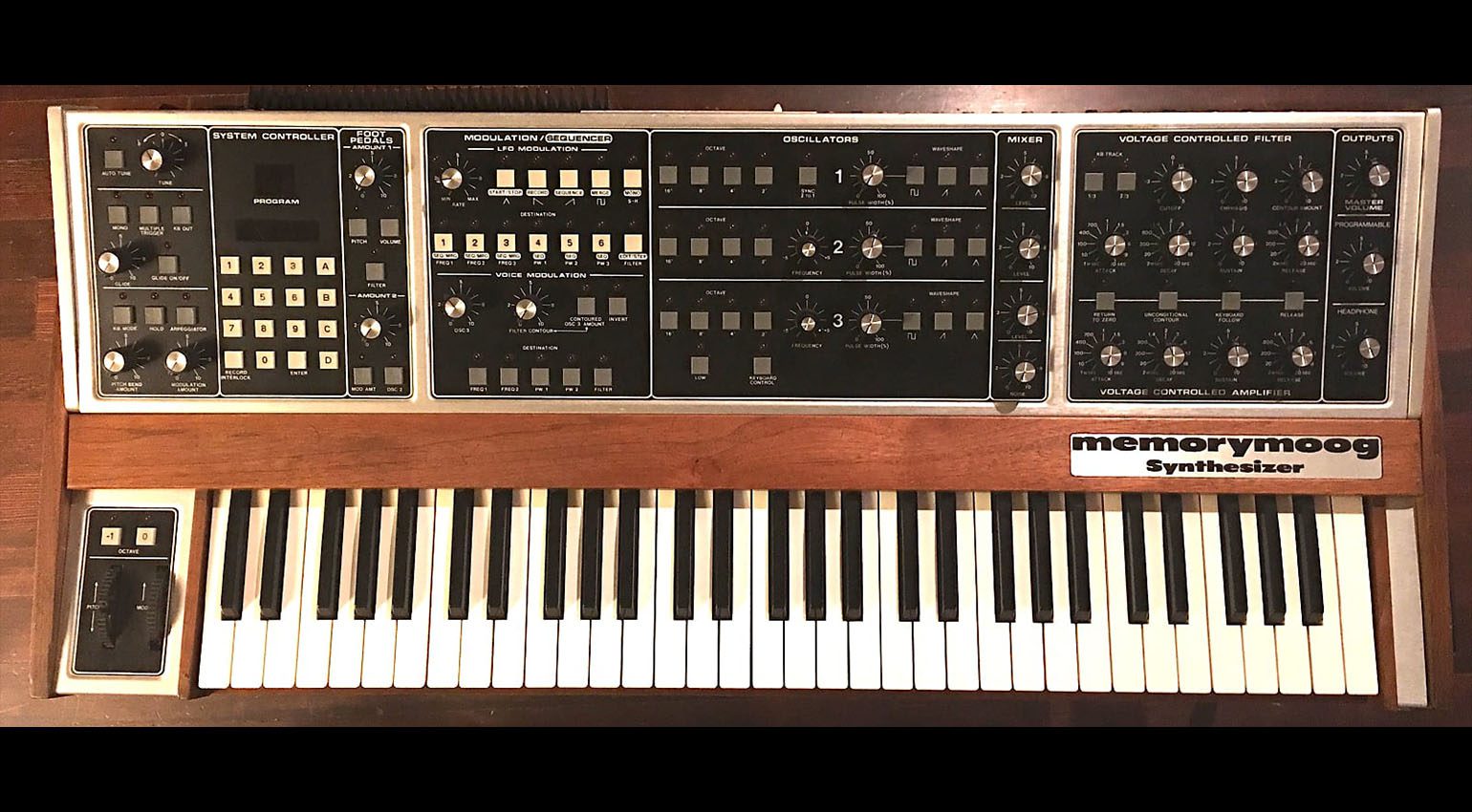

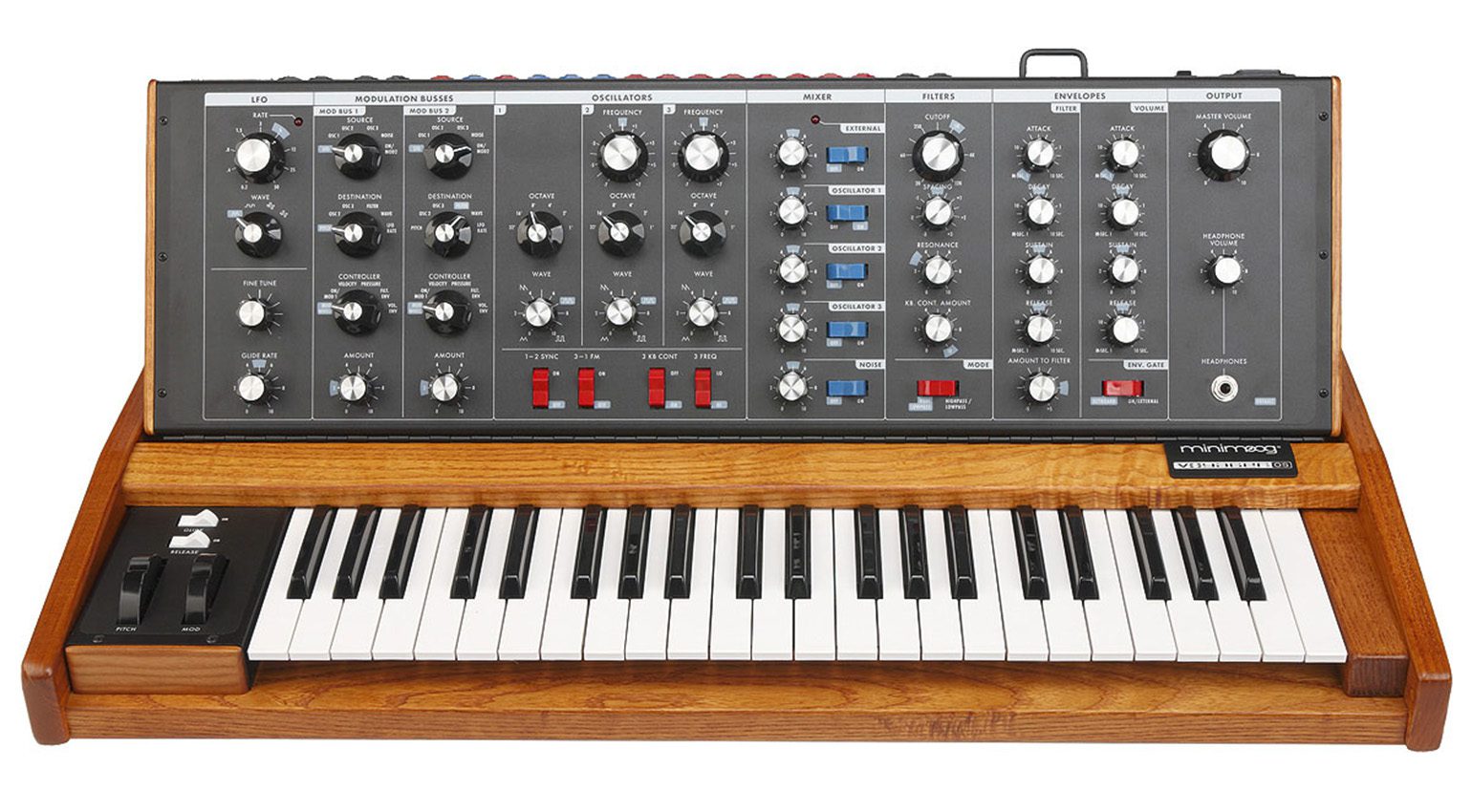
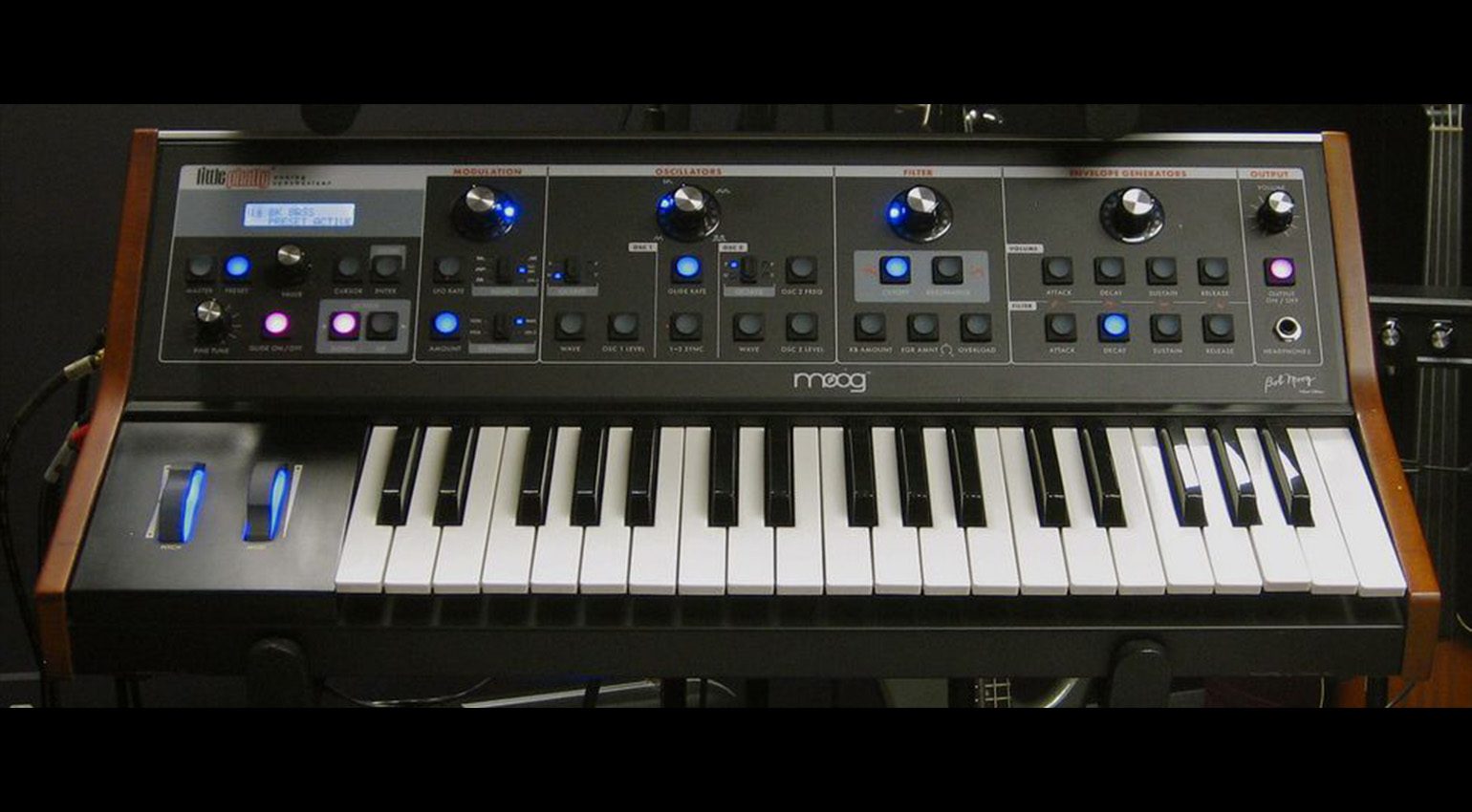
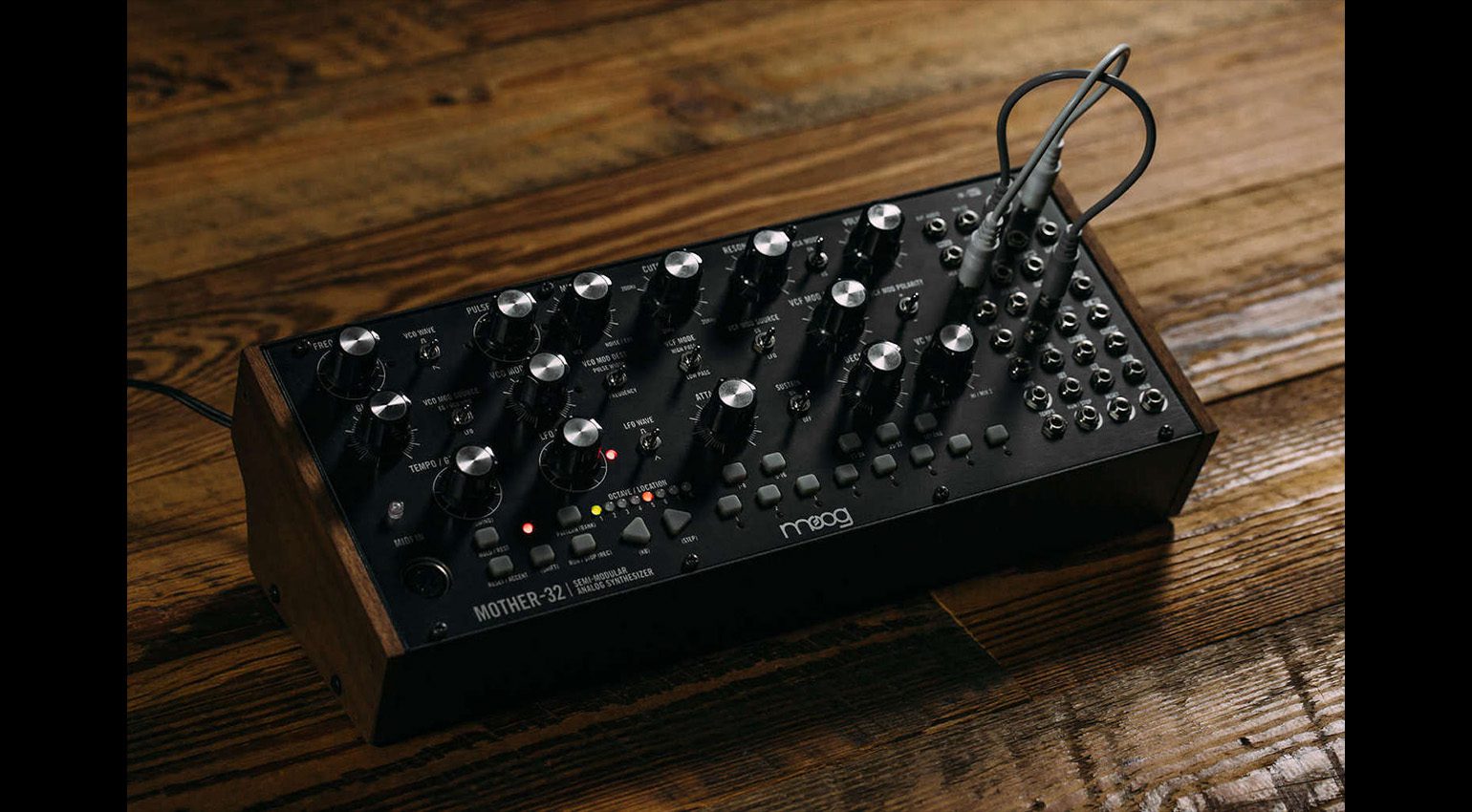
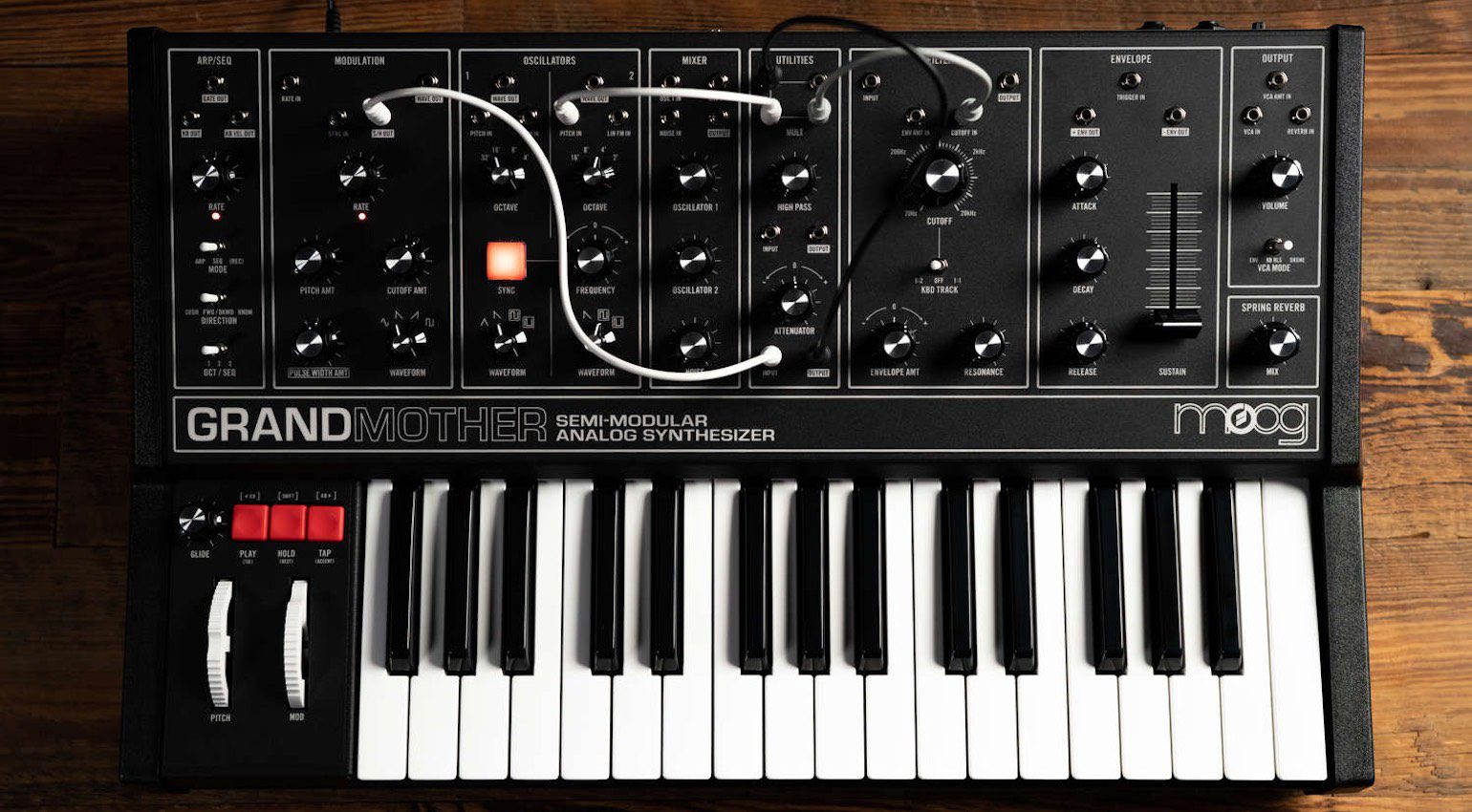
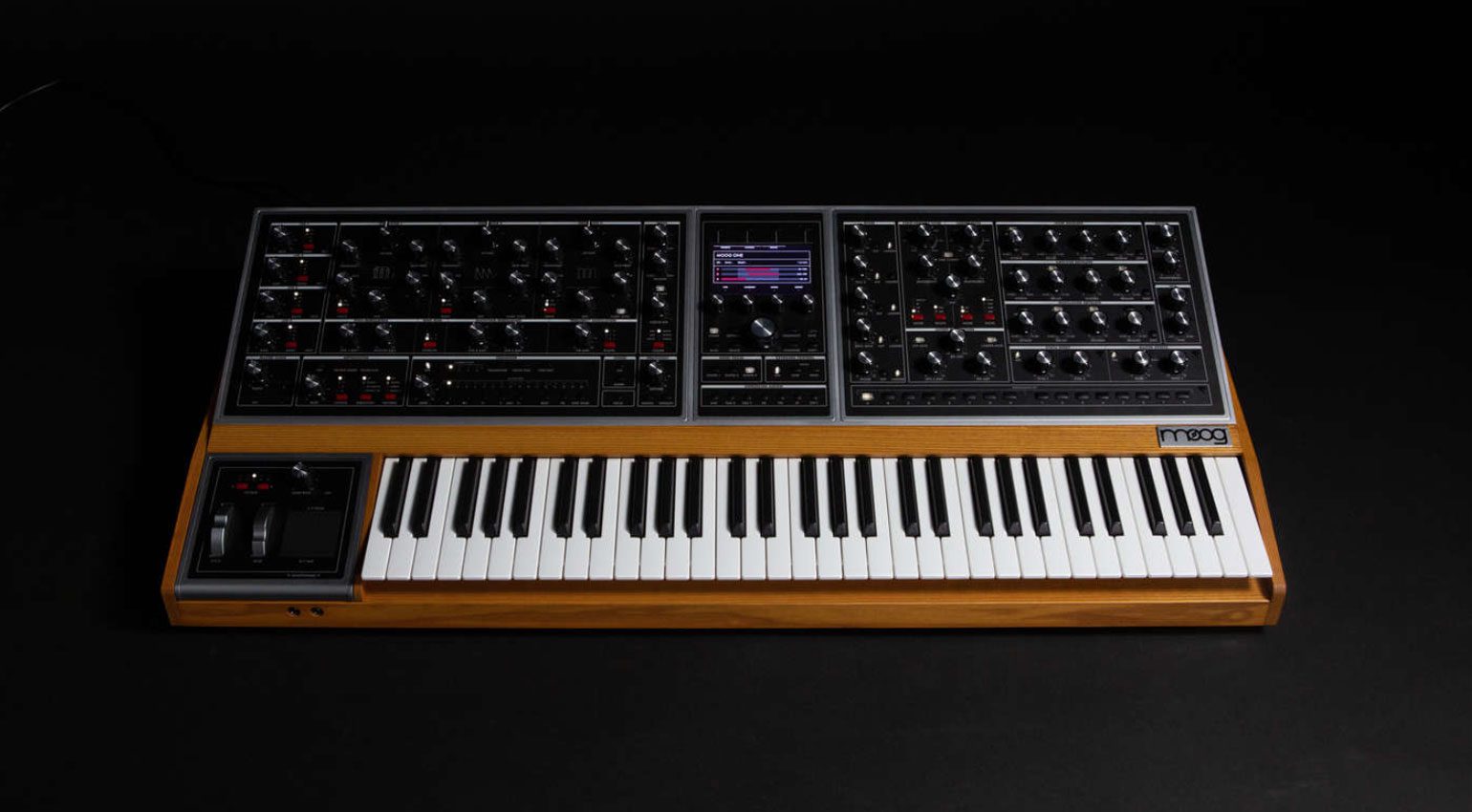


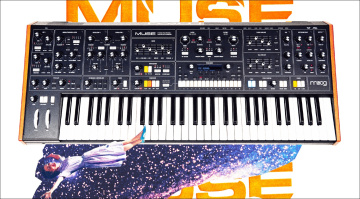
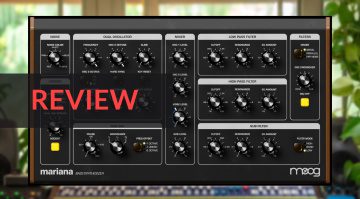
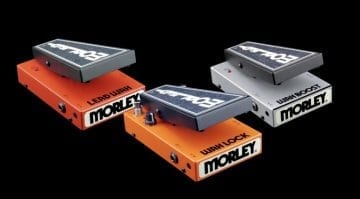
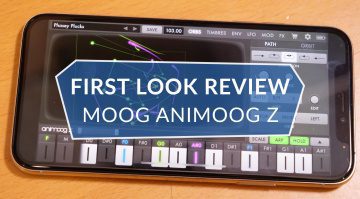

Such a loss to the scene and to Music as a whole.
Without the community behind them, InMoogsic will fail and the community at large are already walking away.
The Bob Moog Foundation is an important legacy of Bob Moog that should be mentioned here. Founded by Bob’s daughter Michelle Moog-Koussa after his passing, the educational non-profit has several initiatives including the Moogseum in Asheville, NC and Dr. Bob’s SoundSchool. SoundSchool brings the science of sound to public schools in N.C.with goals of spreading across the country. Visit the Moogseum if you’re ever in Asheville, its amazing interactive exhibits feature prototype instruments, biographical info on the inventor, and a chance to dig on music featuring Moog synths. Consider donating to The Bob Moog Foundation if you want to support a great cause!